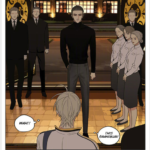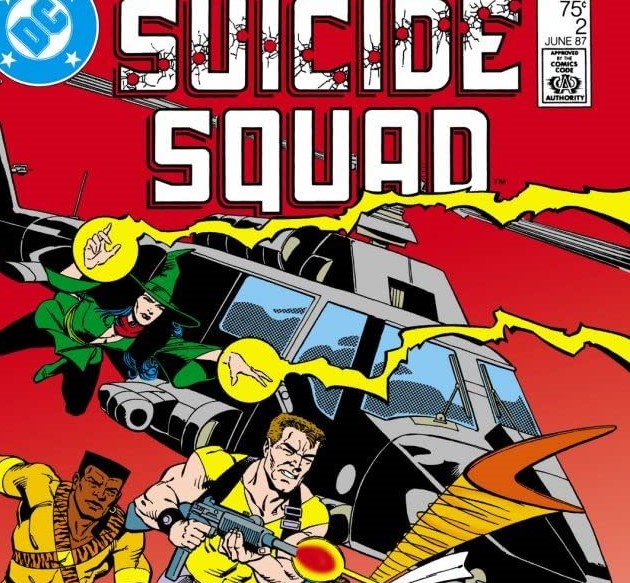
2016’s Suicide Squad was one of the worst modern superhero films I’ve ever seen. So why am I excited for 2021’s The Suicide Squad? Because it’s directed by James Gunn, the man responsible for one of my favorite Marvel movies: Guardians of the Galaxy (2014)! However, we’ve still got a long way to go before we can watch heads explode. Each month, I’ll be reading and giving my thoughts on each issue of John Ostrander and Luke McDonnell’s classic 1987 Suicide Squad run. That’s eight volumes (66 total issues) for the eight months leading up to the April 6 release of The Suicide Squad. So follow along as we get emotionally attached to these characters, only to watch James Gunn kill them all next year! First up is Secret Origins #14, conveniently included in the new reprints of Suicide Squad Volume 1.
Secret Origins #14 (1986)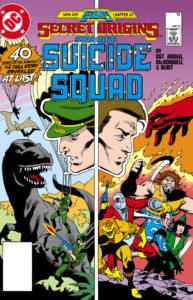
Amanda Waller and Rick Flag’s origins are compelling on their own. However, telling their stories in the same issue creates an interesting juxtaposition between the two characters. Both have suffered losses, but one clearly comes from a place of privilege. Both want to do good but have different interpretations of how to achieve that. Here, Flag’s story centers around American military valor and honoring those who have fallen. That type of story usually doesn’t interest me, but here, Ostrander hits all the right emotional beats, even when it gets cheesy about “carrying on.” It’s a far cry from the Rick “THIS IS KATANA” military dude we got in the 2016 film.
Waller’s past is significantly darker. She recalls growing up in a crime-ridden and violent part of Chicago, vowing to raise a family and escape the cycle of poverty. She even makes a snide remark to President Ronald Reagan about those “social programs” he seems to have forgotten about. Seeing her personal struggles and watching her stand up to the President tells you all you need to know about her in just a few pages. It’s a reminder of why even the most fearsome villains don’t mess with her, but it also explains her desire to control everything as well. My only qualm is that her personal story isn’t really explored too much in other media.
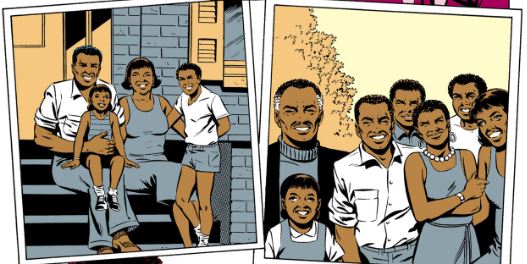
Suicide Squad #1-2
These first two issues have the Squad dealing with The Jihad, a terrorist group from the fictional DC Comics nation of Qurac. Interestingly enough, this is the squad’s second mission; their first was in the recent Legends #3 where they took down Brimstone. They’ve also already suffered their first loss as Blockbuster got squished in the palm of Brimstone’s hand. Yuck. In any case, Waller goes through the usual spiel for newcomers Mindboggler and Plastique: survive the mission; get time shaved off your sentence. But instead of bombs in their heads, it’s an explosive arm band that’ll take their arm off for straying too far during a mission.
Surprisingly, some of the members sort of want to be on the squad. Mindboggler mentions staying simply because she doesn’t fit in anywhere else. Bronze Tiger and June Moone, with her alter ego The Enchantress, joined with the promise that Waller can help them better understand themselves. Deadshot is looking to go down in a blaze of glory, and Captain Boomerang is, well, himself: A scumbag. Or as Plastique says, “a mouth with legs.” The clashing personalities are fun and remind me of tabletop RPG parties. They’re certainly expendable in the same way some of my own D&D characters were (RIP Vruugar).
After introductions, the Squad is finally ready to embark on their first official mission: infiltrate The Jihad’s mountainside headquarters and neutralize them. What happens next is what you’d expect from a ragtag team of supervillains coerced into working under Amanda Waller. Lots of surprises and very little going according to plan. We’re also introduced to Nightshade and Nemesis, spies working for Waller who have infiltrated The Jihad. Both their introductions flow naturally within the story and give a good sense of who they are.
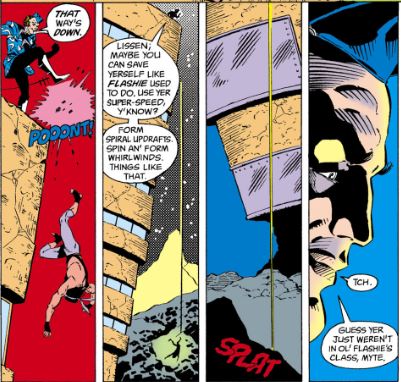 The Jihad is a fun team to pit against the Squad, and each character gets a moment to shine. Boomerang booting a second rate Flash off a mountain was downright dirty and what you’d expect from him. It was also cool to see his respect for his arch-nemesis that hearkens back to his time with the Rogues of Central City. The Manticore ripping through a falling elevator like paper was also a scene stealer thanks to disciplined panel layouts by McDonnell. It had me wondering how, exactly, Deadshot would take down The Manticore. With bullets of course. In the face, to be exact. Eventually, the Squad finishes their mission but in their own haphazard way. Mindboggler’s dead. Plastique is a traitor. And members of The Jihad are still alive. Such is the way in the Suicide Squad.
The Jihad is a fun team to pit against the Squad, and each character gets a moment to shine. Boomerang booting a second rate Flash off a mountain was downright dirty and what you’d expect from him. It was also cool to see his respect for his arch-nemesis that hearkens back to his time with the Rogues of Central City. The Manticore ripping through a falling elevator like paper was also a scene stealer thanks to disciplined panel layouts by McDonnell. It had me wondering how, exactly, Deadshot would take down The Manticore. With bullets of course. In the face, to be exact. Eventually, the Squad finishes their mission but in their own haphazard way. Mindboggler’s dead. Plastique is a traitor. And members of The Jihad are still alive. Such is the way in the Suicide Squad.
Suicide Squad #3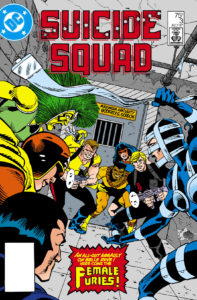
After the events of Legends, Darkseid sends his Female Furies to retrieve a nearly comatose Glorious Godfrey from Belle Reve. While The Jihad presented a fun challenge to the Squad, the Furies vastly overpower both teams. In fact, the Furies face more danger from their own petty hatred of one another than they do from the actual Squad. Speaking of which, the Squad still has their own grievances to air after their failed mission in Qurac, most of it aimed at Waller. Of note is Flag’s disapproval of her decision to brainwash Plastique. Waller initially bites back but then recants her words, apologizing and agreeing that she went too far. Again, we’re shown why Flag plays an integral part in keeping Waller honest, and it isn’t very often I’ve seen her admit wrongdoing.
One of the strengths of this series is how Ostrander isn’t afraid to show the team losing. Instead, it’s much more interesting to see how a team like this even functions in the first place. Batman and Superman may butt heads in the Justice League Watchtower from time to time, but Boomerang straight up leaves Mindboggler for dead. Why? Because she made fun of him one time. And despite that, I still find myself rooting for the guy.
Suicide Squad #4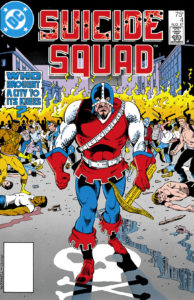
This single-issue story revolves around a new Central City vigilante named William Hell. He’s taken the place of the absent Flash after the events of Legends but, unlike the Scarlet Speedster, Hell only targets people of color. Any white criminals are recruited into the Aryan Empire, a hate group secretly funded by racist politician, W. James Heller. With Heller preparing for a speech and a race riot brewing in response to it, Waller wants the squad to quell tensions before violence erupts. Deadshot nonchalantly ponders out loud that they should just shoot Heller. Pure and simple. Except, as Waller points out, that would only turn him into a martyr. No, they need to discredit him in front of his supporters. What follows is an incredibly relevant story for our current political and social climate in America.
William Heller is presented as charismatic enough to gain supporters, but he’s also pretty dumb. By now, I’m sure you’ve connected the dots that William Hell the vigilante and W. James Heller the politician are the same person. At first, this seems like an oversight by Ostrander. However, I think it was done on purpose to highlight just how idiotic these types of characters are. Heller tries to be “tough on crime” for his supporters yet, for the whole issue, a team of criminals is one step ahead of him the whole way! He never stood a chance.

Heller is still a truly despicable character as he preys on people’s fears. He speaks in coded language and tells his supporters their city will erupt in flames so long as they, the “common man,” are dragged down by, “the uneducable.” You begin to wonder if it’s truly “tough on crime” or “tough on crime committed by PoC.” There’s even a great line by Bronze Tiger who snaps back at Boomerang for suggesting that most crime is committed by PoC, despite the Suicide Squad being made up of white criminals. In the grand scheme of Ostrander’s run, this issue is disappointingly forgotten. But it’s a great issue nonetheless, and credit should be given to Ostrander for touching on the subject of race relations respectfully.
Suicide Squad #5-7
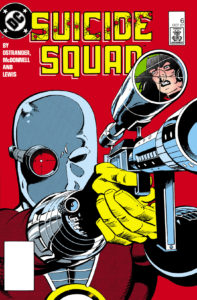
Issue #5 opens up with a discussion between Russian President Mikhail Gorbachev and his confidants as they ponder what to do with political prisoner, Zoya Trigorin: Set her free or let her rot in a gulag. There’s a lot of dialogue, but it’s an interesting examination of what makes an authoritarian government shake in their boots. Trigorin, a Russian author responsible for the treasonous book, The Firebird, is a terrible author. Being the daughter of a well-known political prisoner who died in a gulag is the main reason she gets any attention in the first place. There’s good reason to believe letting her write more would hurt her own reputation rather than the Soviet Union. Killing her may be easy, but it would turn her into a martyr for Soviet citizens, just like her father. What follows is a heist story where, again, nothing goes right for the team.
Despite the chaos, however, there are moments of downtime that highlight just how broken these characters are. In particular, we start to see the seeds of Deadshot and Flag’s rivalry begin to sprout. For all of Flag’s heroism and valor, Deadshot points out that they’re both lone wolves who don’t fit in with the pack, a comparison Flag is quick to dismiss. Moments like this bring some much needed humanity to this band of criminals. Of course, no one wants to be on a team named the “Suicide Squad” but, for many, this is all they’ve got. Meta-wise, this also fits the bill since nearly all of these characters were forgotten by comicbook fans until the start of this series. Hell, The Enchantress was on a team called “The Forgotten Villains” at one point.

While the team’s fight against The People’s Heroes isn’t as fun as their bout with The Jihad, there are still great moments–like when Black Orchid does an Injustice-like super move on one of The People’s Heroes. By the end, however, they’ve lost Nemesis to the Russians and Trigorin is dead. While this seems like a loss for the Squad, the ending leaves readers on a rather hopeful and idealistic note. Trigorin is dead, but she’s now made to be a martyr in a way her books never could.
Suicide Squad #8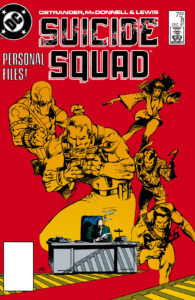
After the fiasco in Russia, each Squad member gets a late night analysis done by Simon LaGrieve, Belle Reve’s in-house psychiatrist. Each segment peels back another layer of each character and successfully hints at what the next volume holds. Waller punching a smug Derek Tolliver was a highlight, but we’re also shown that she genuinely cares for the safety of her team. Yes, the Suicide Squad is expendable but only if necessary. It’s a side of her I wish we got more of instead of the cold-hearted and uncompromising authority figure she’s often portrayed as in other media.
That’s it for this month! Be sure to check back here in January as we geek out about Suicide Squad #9-16, plus a couple of those pesky tie-in issues.


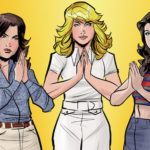
![[REVIEW] THE LEGENDARY LYNDA BARRY INSPIRES A NEW GENERATION OF ARTISTS WITH ‘MAKING COMICS’](https://geekd-out.com/wp-content/uploads/2019/11/barry3-150x150.jpg)
